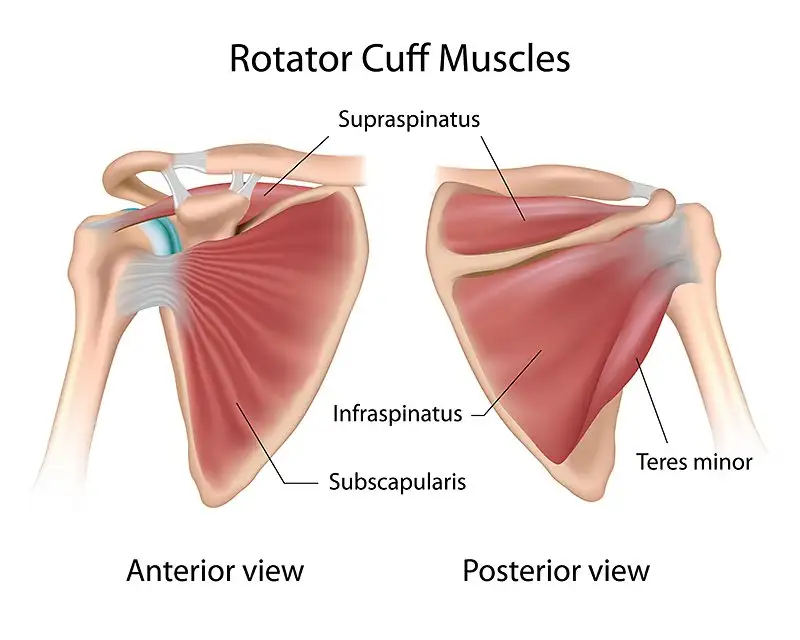Rotator Cuff Injury
Rotator cuff injuries are often a horrible experience as they can be painful and can interfere with many aspects of your day-to-day living.
Symptoms of a Rotator Cuff Injury
Symptoms can be mild to severe. The most common symptoms include:
- Loss of arm strength
- Pain &/or difficulty performing tasks that require raising your arm or rotating your arm behind you
- Pain in the shoulder that is commonly described as a dull ache
- Depending on the type of injury, symptoms can develop slowly, or come on instantly
Common Rotator Cuff Injuries
Tendonitis – inflammation or irritation of a tendon is one of the most common rotator cuff injuries.
Bursitis – inflammation of the bursae which are small fluid-filled sacs within the shoulder joint.
Rotator cuff injuries are often the result of wear and tear from everyday activities, which therefore means the injury can develop slowly. However, some rotator cuff injuries can result from sudden movements such as lifting something heavy or falling on to your arm.
Anatomy of your Rotator Cuff
The muscles of your rotator cuff surround the bones and joints of your shoulder. The muscles and tendons help hold your arm in the socket of your shoulder blade. The muscles of the rotator cuff help you raise and rotate your arms.
Risk Factors
Your risk for a rotator cuff injury increase with age and your family history can even play a role. Repetitive arm movements, such as those required for playing certain sports like tennis, will increase your risk. Working in construction, house painting and other jobs that involve repetitive arm motions, especially overhead, will increase your risk of an injury.
Diagnosis and Treatment
In an appointment, your Chiropractor will take a thorough history to evaluate the situation and will also perform certain physical tests. Imaging such as an MRI can help the diagnosis.
The goal of treatment is to reduce pain, improve movement in the shoulder joint and get you functioning at your best again. Non-surgical treatments can include physical therapy, rest, pain relievers or steroid injections. Surgical treatment may be needed for cases where the non-surgical were unsuccessful.
Early diagnosis and treatment can greatly improve your outcome.
If you think you may be suffering from a rotator cuff injury or have more questions, please contact us today at Body Care Health & Chiropractic.
Author: Dr Felicity Ede


